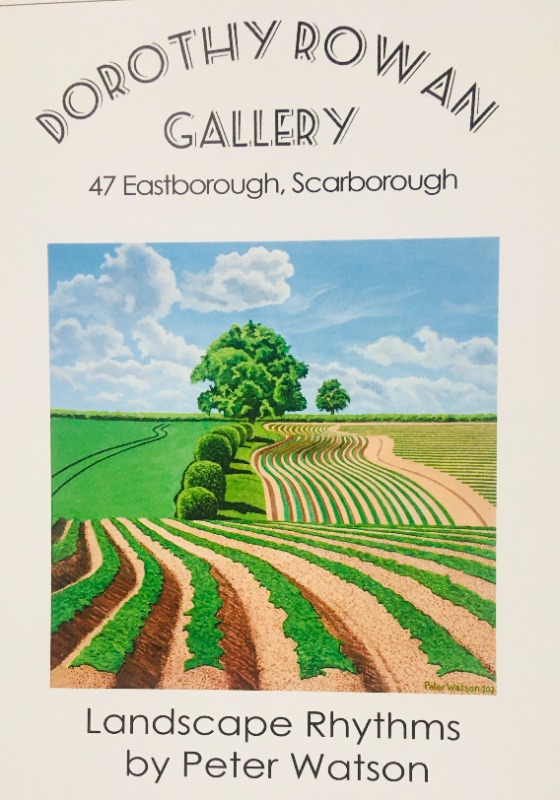

Andrew Liddle, Guest Writer
Peter Watson’s Landscape Rhythms Celebrate The Beauty Of The Wolds
.jpeg)
Fordon Dale - Peter Watson
Opened in 2020, the DRG has quickly established itself as the must-visit place to see the best of local artists. No sooner has the latest exhibition by the gallery’s owner, Stuart Hirst, come to a triumphant end than another is opening.
“I am delighted to showcase the work of Peter Watson,” says Stuart, nationally famous for his series of northern streets painted in watercolours over a 50-year period. “I consider him to be one of the finest artists currently working in the north - and no one has done more to evoke the spirit of place of the Yorkshire Wolds.”
.jpeg)
Sheep Lane, Kilham, from the Roman Road
But feast your eyes on Peter’s paintings, some 10 originals and the rest popular prints of commissioned pieces, and see this beautiful unspoiled area as it really is, as it is intimately known to someone who grew up in its midst, is highly attuned to its rhythmic cadences and has an incomparable artistic ability to capture its soul!
A genuine Man of the Wolds, not a fashionable oftcumden, he was raised in Beverley and went to school in Pocklington. As a boy he visited the region’s farms, large and small, with his father, an agricultural inspector.
.jpeg)
Cobble Landing, Filey
Undulating fields appear in the foreground of his Wolds’ evocations, visualised in wavy parallel lines that disappear into infinity - as in the captivating centrepiece, Potato Field, at Octon - and in contoured variegations, carved, flowing, shimmering, resonating, anything but static. The angles, energy, and enigmatic geometry of Sheep Lane, Kilham, captured from the Roman Road, discover anonymous ancient fields pulsating with life, possessed of a personal identity.
.jpeg)
Potato Field, Octon
The effect on the viewer in so many paintings merely of empty fields, whose features are found in ploughed land with lone trees, rather than uplifted landmarks, is illuminating. We are invited to see beyond the mere hedged boundaries and rounded contours to the very heart of this remote corner of England, where nature seems primed to detonate at the turn of each season, release nurturing forces and energies or wither into dormancy.
.jpeg)
Furrowed Brow Peter Watson
Perhaps more than any other current artist, he celebrates this tranquil glory in, for example, the diversity of Fordon Dale’s patchwork of ploughed fields, scenes entirely overlooked by traditional romantic landscape artists in search of rugged grandeur under golden skies.
I have to stress it is only my opinion - but I also find Hockney’s landscapes to be showily unrestrained, by comparison, flagrantly contemporised, obtrusively meretricious even, and more about their progenitor than the sense of place.
The Wolds are central to Landscape Rhythms, but the exhibition also offers insight into Peter’s work over a long period and beyond the confines of his native heath.
.jpeg)
Orgreave in its prime
Most days throughout the exhibition Peter, now based in East Ayton, will be in the gallery to show visitors around and discuss his works and oil-painting techniques.

more information see:
http://peterwatsonpaintings.co.uk
See also Andrew Liddle’s feature, in his ongoing series on great northern artists:
Watson-Of-The-Wolds
.jpeg)
Looking North from Appleton le Moors Peter Watson